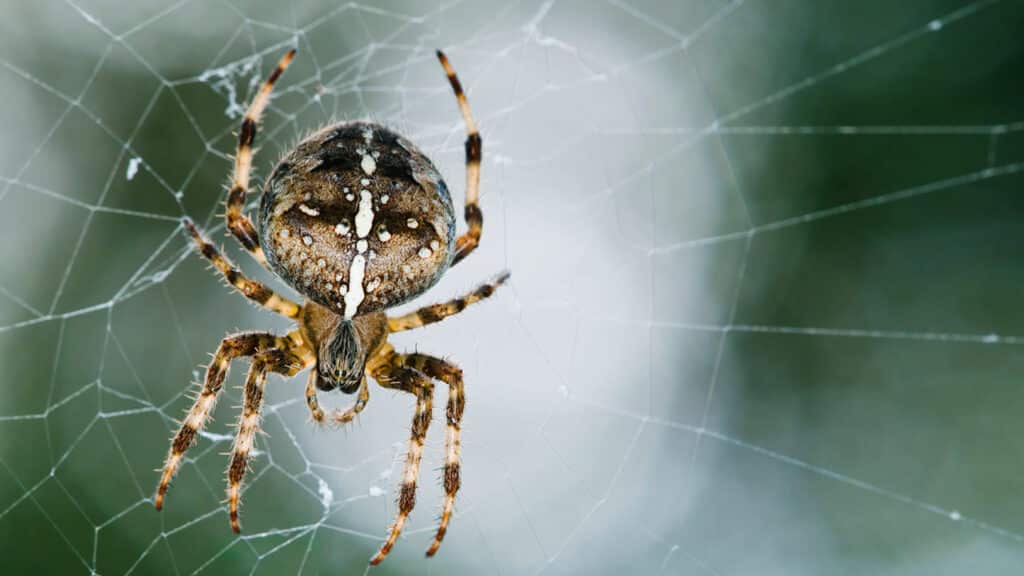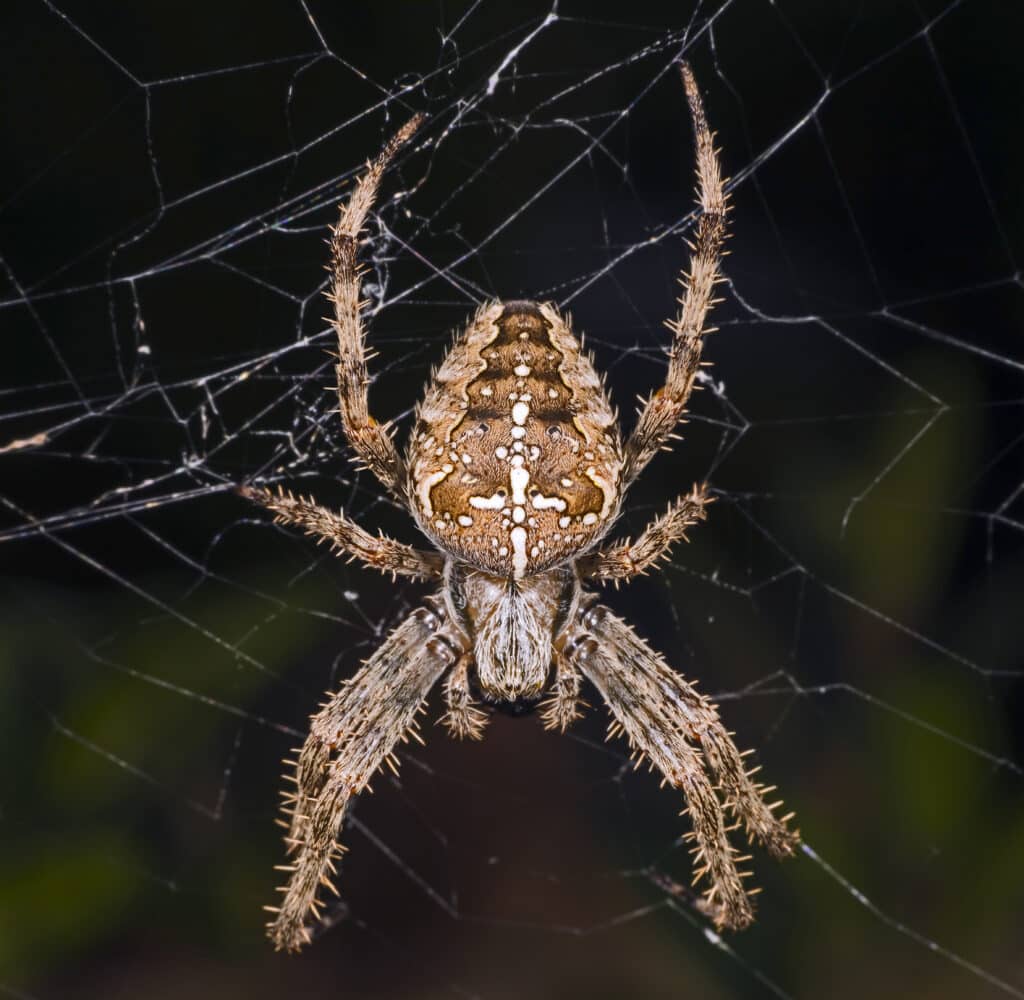Garden spiders, scientifically known as Araneus diadematus, are fascinating creatures belonging to the orb-weaver spider family. These common arachnids are known for their beautiful webs and intriguing hunting behaviours. In this comprehensive article, we will delve into the world of garden spiders, exploring their physical characteristics, habitat, web-building skills, reproductive processes, diet, predators, role in ecosystems, interactions with humans, conservation status, and the various aliases they are known by.
Introduction to Garden Spiders
Garden spiders, also commonly known as cross spiders, European garden spiders, or diadem spiders, are a diverse group found in various regions worldwide, including North America, Europe, and parts of Asia. Their scientific name Araneus diadematus refers to the distinctive cross-shaped pattern on their abdomen. These spiders are relatively large, with females measuring around 0.4 to 1 inch in length, slightly larger than their male counterparts.
Physical Characteristics and Appearance
Garden spiders are visually striking creatures with a variety of colours and patterns that contribute to their unique appearance. Their body length ranges from 0.4 to 1 inch, and their overall size can vary slightly depending on their gender, with females typically being larger than males.
The colouration of garden spiders is highly diverse, and they can display various shades of brown, yellow, or orange, often accompanied by intricate patterns and markings on their abdomen. One of the most distinctive features is the cross-shaped pattern found on the dorsal side of their abdomen, which is responsible for one of their common names, “cross spiders.” This pattern varies in colour and intensity among individuals.
The cephalothorax (the front part of the spider where the legs attach) is usually darker in colour than the abdomen, with a more pronounced texture. The legs of garden spiders are long and covered in fine hairs, known as setae, giving them a velvety appearance. These hairs serve multiple functions, such as sensing vibrations on their webs and helping the spider maintain grip while moving.
The chelicerae, or mouthparts, are located at the front of the cephalothorax and are equipped with fangs used for injecting venom into their prey. While not particularly large or threatening to humans, the fangs are highly effective in immobilising the spider’s catch.
Garden spiders have eight eyes arranged in two horizontal rows of four. Their vision is not particularly acute, but they are sensitive to changes in light, which helps them distinguish potential prey and threats.
The abdomen of female garden spiders is generally larger and rounder than that of males. This distinction becomes more evident during the breeding season when females carry an egg sac beneath their abdomen.

Habitat and Distribution
Garden spiders prefer habitats where they can construct their orb webs with ease, such as gardens, meadows, forests, and other open areas. These arachnids are adaptable and can thrive in both rural and urban environments. They can be found in the corners of windows, between plants, and under eaves of houses.
Garden spiders have a wide distribution, being prevalent in temperate regions across the globe. In North America, they are commonly sighted from spring to late fall, while in Europe, their presence can be observed from early summer to autumn.
Web Building and Hunting Behaviour
One of the most impressive aspects of garden spiders is their web-building prowess. They create large, intricate orb webs, which are effective in capturing flying insects like flies, moths, and mosquitoes. Garden spiders are passive hunters; instead of actively seeking prey, they rely on their skillfully crafted webs to ensnare their next meal.
The web-building process begins with the spider releasing silk threads into the wind. When the silk catches on a nearby surface, the spider uses this scaffold to construct the initial framework of the web, commonly referred to as the “spoke-like” structure. Once this framework is complete, the spider adds a sticky spiral pattern, designed to trap unsuspecting prey.
When an insect gets caught in the web, the garden spider detects the vibrations, rapidly discerning if it’s a viable meal. If the prey is suitable, the spider rushes toward it to deliver a venomous bite. The venom paralyses the prey and initiates the digestion process. The spider then wraps the immobilised insect in silk before consuming it.

Garden Spider Diet
Garden spiders are carnivorous predators, and their diet mainly consists of small insects that get trapped in their orb webs. They are particularly effective at capturing flying insects due to the strategic placement and stickiness of their webs. Common prey items include flies, mosquitoes, moths, butterflies, and other flying insects that inadvertently get caught while navigating through the spider’s web.
Predators of Garden Spiders
While garden spiders are skilled hunters, they are not without natural enemies. Several creatures are known to prey on garden spiders, including birds, wasps, mantises, and other larger spiders. When these predators encounter a garden spider’s web, they may attempt to break through and attack the spider directly or steal its captured prey. To defend against such threats, garden spiders rely on their keen senses and agility to detect and avoid potential predators.
Reproduction and Lifecycle
Mating among garden spiders is a perilous process for the male. Before approaching the female, the male spider must carefully court her to avoid being mistaken for prey. He often approaches her cautiously and taps gently on the web to signal his presence. If successful, he mates with the female, and then he must quickly retreat to avoid becoming her next meal, as sexual cannibalism is not uncommon in garden spiders.
After mating, the female constructs a silken sac in which she lays her eggs. She attaches this sac to foliage or other surfaces, guarding it diligently until the spiderlings hatch. The spiderlings undergo several moults as they grow, shedding their exoskeletons to accommodate their increasing size. They remain close to their mother until they are ready to disperse and establish their own webs.
Garden Spiders and Their Role in Ecosystems
Garden spiders play a vital role in maintaining ecological balance. As natural pest controllers, they primarily prey on insects that can damage crops and gardens. By keeping insect populations in check, garden spiders contribute to the overall health of ecosystems, reducing the need for chemical pesticides.
Additionally, garden spiders serve as a crucial food source for various predators, including birds and larger spiders. Their abundance ensures a steady supply of prey for these animals, sustaining the intricate web of life in their habitats.
Interaction with Humans
Garden spiders have often been the subject of fear and misconceptions among humans. However, it is essential to understand that these creatures are not dangerous and generally avoid human contact. While their appearance and hunting techniques may be intimidating to some, garden spiders are not aggressive and are unlikely to bite humans unless provoked.
Folklore and cultural stories have frequently depicted garden spiders as symbols of creativity, patience, and balance. They are woven into various mythologies, showcasing the impact these arachnids have had on human imagination.
Conservation Status and Threats
The garden spider population remains stable, and they are not considered endangered. However, they are susceptible to the same threats that impact most wildlife. Habitat destruction due to urbanisation, agriculture, and pesticide use poses significant challenges for these spiders. To ensure their long-term survival, promoting sustainable gardening practices and raising awareness about their importance in ecosystems are crucial.
Conclusion
In conclusion, the garden spider, scientifically known as Araneus diadematus, is a remarkable arachnid that enriches our ecosystems in numerous ways. Their striking appearance, web-building skills, and role in controlling insect populations make them a fascinating and beneficial species. By understanding and appreciating garden spiders, we can foster a harmonious coexistence with these important creatures.
Additional Resources
Sam loves to learn about animals and their habitats. He has been a nature lover from a very young age, and has been writing papers and articles about wildlife for as long as he can remember.

Garden Spider behaviour
I have just put 3 photos of a Spider (Garden Spider I think) that’s been living on (the outside of) my bedroom window (South facing) for the last few days. I noticed that it had 6 1/2 legs – the half seemed to have been regenerated.
A couple of days ago, I noticed a smaller spider approaching across its web. After some cautious interaction the larger spider seemed to allow the smaller to ‘groom’ it. The smaller then went to the other extreme of the window. Since then I’ve noticed them coming together for what looks like mutual grooming and then splitting, so the smaller one is off the window (obviously, I’m observing from the inside.) I’ve also seen two smaller sized ones around the web of the larger, without seemingly being afraid of the larger.
3 photos at:-
See: https://www.flickr.com/photos/watchman/53177945319
(and the two adjacent photos)
But what do you think is going on? Are they both garden spiders? How can I tell their sex? Have you seen this behaviour before? All info welcome. Thanks
Mike D
Hi Mike,
From the photos you’ve provided and the behaviour you’ve described, it does seem like you have garden spiders (Araneidae) living outside your bedroom window. Garden spiders are common orb-weaving spiders known for their intricate, circular webs.
Spiders are solitary creatures for the most part, but there are exceptions to this rule. Sometimes, smaller spiders will approach larger ones without being seen as a threat, especially if they belong to the same species. Mutual grooming or interactions can occur between spiders of the same species, and this might be what you observed.
Spiders exhibit various behaviours, and interactions between spiders of the same species can be complex. Sometimes, smaller spiders might be offspring or juveniles of the larger spider, and they might not be seen as a threat by the larger one. It’s also possible that they are simply coexisting in the same area without much conflict.
Hope this helps 🙂